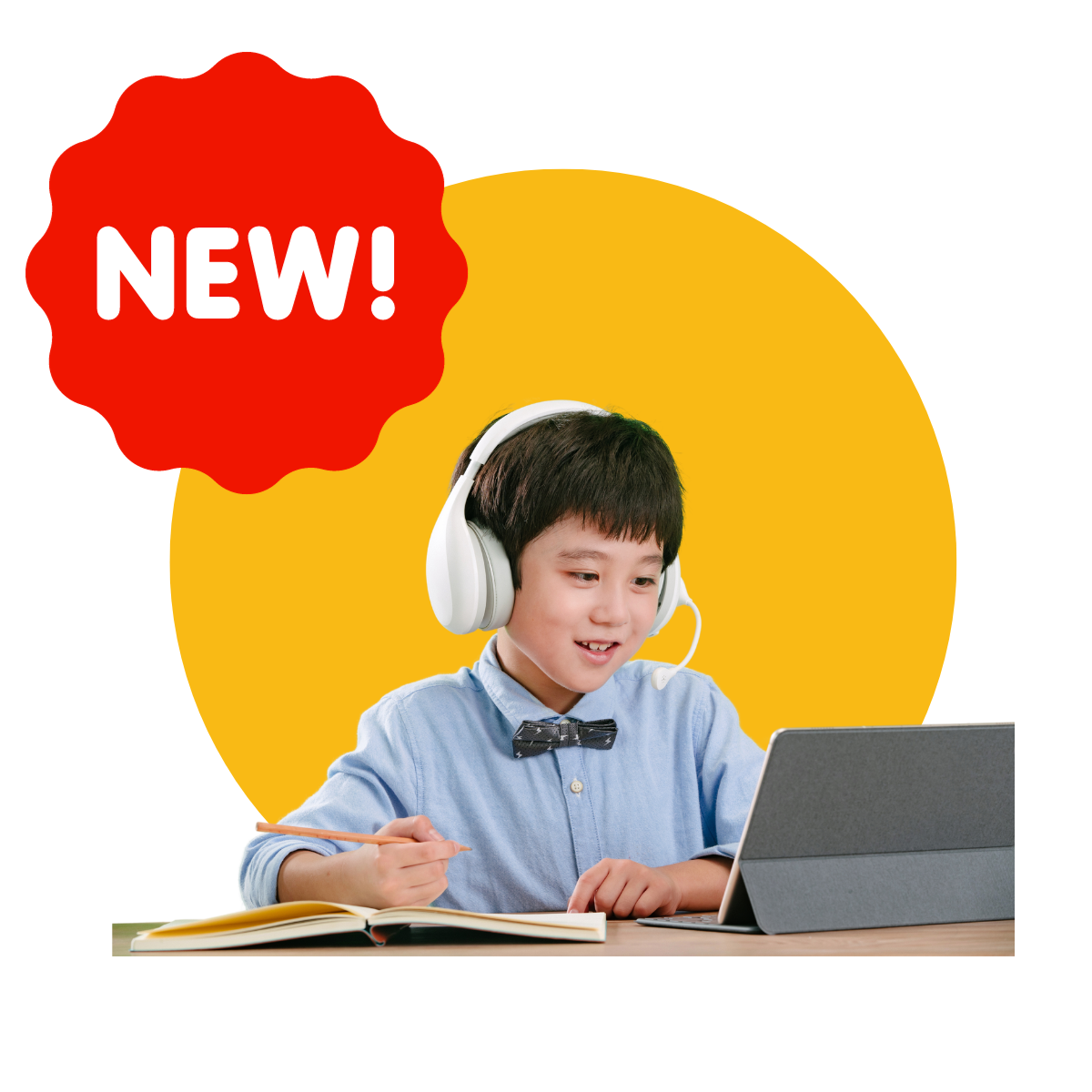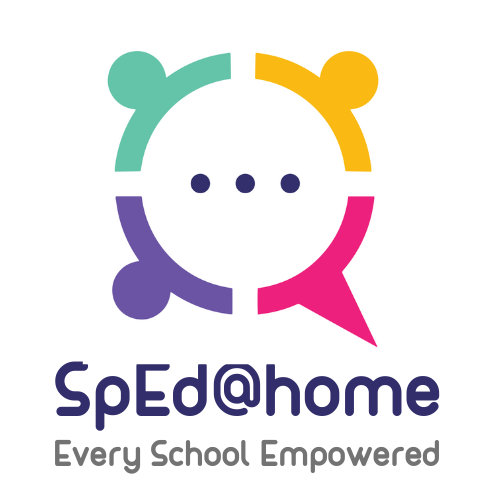Title: Unlocking the Full Spectrum: Exploring the Unique Benefits of Homeschooling
Introduction:
As the landscape of education evolves, homeschooling has emerged as a powerful and customizable alternative for families seeking an enriched learning experience. While some benefits of homeschooling, such as personalized learning plans and flexibility, are well-known, this article delves into unique points that make homeschooling a truly transformative journey.
Diverse Learning Spectrum:
Homeschooling accommodates neurodivergent children, gifted learners, and those with unique learning styles, fostering an inclusive environment that celebrates individual differences.
Inclusive Learning Environment
In traditional classrooms, children with diverse abilities may face challenges in feeling fully included. Homeschooling, however, creates an inclusive atmosphere where neurodivergent and gifted learners can coexist harmoniously. The personalized nature of homeschooling encourages understanding, empathy, and a celebration of diversity, setting the stage for a supportive learning environment.
Customized Learning Timelines
Traditional schools often adhere to a fixed academic calendar, but homeschooling offers the flexibility to tailor the academic year to each child’s pace. Recognizing that children learn at different speeds, this customization accommodates variations in learning timelines, promoting a more comfortable and stress-free learning experience.
Life Skills Integration
Education extends beyond textbooks, and homeschooling provides the ideal platform for seamlessly integrating practical life skills into the curriculum. From basic life skills such as cooking and budgeting to more advanced skills like time management, children can acquire valuable real-world knowledge as part of their daily education, preparing them for future independence.
Nature-Based Learning
Homeschooling allows for a unique approach to education that extends beyond the walls of a traditional classroom. Incorporating nature-based learning activities, outdoor excursions, and hands-on experiences in natural settings can enhance a child’s connection with the environment. This approach not only provides a refreshing change but also instills a deeper appreciation for the world around them.
Entrepreneurial Emphasis
An entrepreneurial mindset is increasingly valued in the modern world, and homeschooling facilitates the early development of such skills. By incorporating project-based learning, children can cultivate critical thinking, problem-solving, and creativity, essential attributes for success in a future where innovation and adaptability are key.
Cultural and Religious Exploration
Homeschooling offers families the flexibility to incorporate cultural and religious studies into the curriculum. This personalized approach allows children to explore their heritage, traditions, and values within the context of their education. This not only enriches their understanding of diverse cultures but also fosters a sense of identity and belonging.
Holistic Wellness Focus
Beyond academics, homeschooling emphasizes a holistic approach to wellness. Parents can seamlessly integrate physical education, mindfulness practices, and discussions on healthy living into the daily routine. This holistic focus promotes the overall well-being of the child, recognizing the interconnectedness of physical, mental, and emotional health.
Tailored Extracurricular Activities
Extracurricular activities play a crucial role in a child’s development, and homeschooling allows families to tailor these activities to align with the child’s interests and passions. Whether it’s music, sports, arts, or niche hobbies, the flexibility of homeschooling enables a more personalized approach to extracurricular pursuits, allowing children to explore and excel in areas they are truly passionate about.
Real-Time Learning Opportunities
In homeschooling, everyday life becomes an ongoing classroom. Trips to the grocery store, visits to historical landmarks, or interactions with professionals in the community offer real-time learning opportunities that go beyond the confines of a conventional textbook. These experiences not only make learning more practical and engaging but also help children connect theoretical knowledge to real-world applications.
Global Perspective Integration
With the aid of technology, homeschooling can easily incorporate a global perspective into the curriculum. Virtual field trips, video conferences with students from different parts of the world, and collaborative projects provide a broader cultural understanding and a global outlook on education. This exposure enhances a child’s awareness of diverse perspectives and fosters a sense of global citizenship.
Homeschooling goes beyond its commonly recognized benefits, offering a well-rounded and enriched educational experience that caters to the unique needs, interests, and aspirations of each child. From cultivating an inclusive learning environment to instilling an entrepreneurial mindset, homeschooling unlocks the full spectrum of learning possibilities. The advantages extend into various facets of life, promoting a love for learning that transcends traditional boundaries. As families embark on the homeschooling journey, they discover a dynamic and transformative approach to education that celebrates the individuality of every learner.
Homeschooling has become an increasingly popular choice for families seeking a personalized and supportive educational environment. For parents of children with special needs, homeschooling offers a unique opportunity to tailor education to individual requirements. In this blog post, we will explore the benefits of homeschooling for children with special needs, providing valuable insights and tips for a successful homeschooling journey.
Understanding Special Needs
Before delving into the advantages of homeschooling, it’s crucial to recognize the diverse spectrum of special needs. These may include learning disabilities, developmental delays, attention disorders, and more. Homeschooling can be adapted to accommodate various learning styles and challenges, ensuring a customized educational experience.
The Benefits of Homeschooling for Children with Special Needs:
Personalized Learning Plans
– Homeschooling allows parents to create personalized learning plans tailored to their child’s unique strengths and weaknesses.
– Individualized attention fosters a deeper understanding of academic subjects and helps address specific learning challenges.
Flexible Schedules
– Children with special needs may benefit from a flexible schedule that accommodates their learning pace and preferences.
– Homeschooling allows for breaks, varied activities, and adjustments based on the child’s optimal learning times.
Adaptability to Learning Styles
– Traditional classrooms may not always cater to diverse learning styles. Homeschooling empowers parents to identify and incorporate the best-suited teaching methods.
– Multi-sensory approaches, visual aids, and hands-on activities can enhance the learning experience.
Reduced Distractions
– Children with special needs may struggle with distractions in traditional classrooms. Homeschooling provides a focused and controlled environment.
– Tailoring the learning space to minimize sensory overload can contribute to a more conducive learning environment.
Emphasis on Social Skills
– Contrary to common misconceptions, homeschooling offers ample opportunities for socialization.
– Parents can organize social activities, playdates, and community events to promote social skills development in a comfortable and supportive setting.
Tips for Successful Homeschooling
Set Realistic Goals
– Establish achievable short-term and long-term goals based on your child’s abilities and progress.
– Celebrate accomplishments, no matter how small, to boost your child’s confidence and motivation.
Utilize Resources
– Leverage online resources, support groups, and educational materials specifically designed for children with special needs.
– Incorporate technology to enhance learning, including educational apps and interactive programs.
Regular Assessments
– Implement regular assessments to gauge your child’s progress and identify areas that may need additional focus.
– Adjust your teaching methods and curriculum as needed to meet your child’s evolving needs.
Stay Connected
– Join homeschooling communities and support groups where you can share experiences and gather valuable insights.
– Collaborate with specialists, therapists, and educators to ensure a holistic approach to your child’s education.
Homeschooling for children with special needs is a transformative journey that empowers parents to provide a tailored, supportive, and adaptable learning environment. By understanding the unique needs of your child and leveraging the benefits of homeschooling, you can unlock their full potential and nurture a love for learning. Embrace the flexibility, individualization, and opportunities for socialization that homeschooling offers, creating an enriching educational experience for your child with special needs.
World Dyslexia Day is a day of recognition, celebration, and education. On this special occasion, we come together to shed light on dyslexia, a learning difference that affects millions of individuals around the world. Dyslexia, often misunderstood and underestimated, should be acknowledged not as a limitation but as a unique way of thinking and learning. This article explores the significance of World Dyslexia Day and the importance of raising awareness about dyslexia.
Understanding Dyslexia
Dyslexia is a neuro-developmental disorder that affects a person’s ability to read, write, and spell. It is characterized by difficulties in processing language-related tasks, particularly with decoding words, spelling, and phonological awareness. However, it is crucial to emphasize that dyslexia is not indicative of a lack of intelligence or motivation. In fact, many individuals with dyslexia possess remarkable talents in areas such as creativity, problem-solving, and visual thinking.
The Impact of Dyslexia
Dyslexia affects people of all ages, backgrounds, and ethnicities. Its impact extends beyond the academic realm, affecting daily life and self-esteem. Individuals with dyslexia may experience frustration, anxiety, and a sense of isolation due to their struggles with reading and writing. Nevertheless, it is essential to recognize that with appropriate support and accommodations, individuals with dyslexia can thrive academically and in their careers.
Raising Awareness
World Dyslexia Day serves as a platform to raise awareness about dyslexia and promote inclusivity. It is a day to celebrate the strengths and talents of individuals with dyslexia and to encourage society to better understand and support them. Through education and increased awareness, we can break down the stereotypes and misconceptions surrounding dyslexia.
Promoting Early Intervention
Early identification and intervention are crucial for individuals with dyslexia. The sooner dyslexia is recognized, the earlier appropriate interventions can be implemented to help individuals build essential reading and writing skills. Educational institutions, parents, and caregivers play a vital role in ensuring that those with dyslexia receive the support they need to succeed.
Celebrating Diversity of Thought
Dyslexia brings a unique perspective to the table. Many individuals with dyslexia possess exceptional strengths in areas such as creativity, problem-solving, spatial reasoning, and innovation. Some of the world’s most accomplished individuals, including entrepreneurs, artists, scientists, and athletes, have dyslexia. Recognizing and celebrating this diversity of thought is not only a benefit to individuals with dyslexia but to society as a whole.
Supporting Inclusivity
On World Dyslexia Day, we should renew our commitment to creating an inclusive world where individuals with dyslexia have equal access to education and employment opportunities. This includes providing appropriate accommodations, such as assistive technology and additional time for tasks, to level the playing field.
World Dyslexia Day is a reminder that every individual deserves an opportunity to reach their full potential, regardless of their learning differences. Dyslexia is not a hindrance but a unique way of thinking and learning. By raising awareness, promoting early intervention, celebrating diversity of thought, and supporting inclusivity, we can create a more inclusive and empathetic society where individuals with dyslexia can thrive. Let us celebrate World Dyslexia Day by acknowledging the strengths and talents of those with dyslexia and by working together to create a more inclusive world for all.
The COVID-19 pandemic has reshaped the landscape of education, affecting millions of children worldwide. One of the most profound consequences has been the significant learning loss experienced by students due to extended school closures and disruptions to traditional learning routines. In this article, we will explore the multifaceted impact of the pandemic on children’s school performance and lifestyle, and the strategies needed to mitigate its long-term effects.
The Unprecedented Disruption
When the pandemic hit, schools globally were faced with the daunting task of adapting to remote learning, leaving many students disconnected from the traditional classroom environment. The sudden shift to virtual education posed numerous challenges, including limited access to technology, a lack of structured learning environments, and varying levels of parental support.
Learning Loss and Academic Achievement
Learning loss refers to the decline in educational attainment or the loss of skills and knowledge typically gained during in-person instruction. Research indicates that students experienced significant setbacks in reading, math, and other core subjects during the pandemic. The loss was most pronounced among disadvantaged communities, exacerbating educational inequalities.
Mental and Emotional Toll
Beyond academic consequences, the pandemic took a toll on children’s mental health and emotional well-being. Prolonged periods of social isolation, fear of the virus, and disrupted routines led to increased stress, anxiety, and depression in many children. These emotional challenges further hindered their ability to concentrate and perform well academically.
Redefining Lifestyle and Routine
COVID-19 forced children to adapt to a new way of life. The closure of schools and extracurricular activities disrupted their daily routines. The absence of face-to-face social interactions led to feelings of loneliness and isolation. Screen time increased significantly as online classes, entertainment, and socializing moved into the digital realm. The boundaries between school, home, and leisure became blurred.
Mitigating Learning Loss
Addressing the challenges posed by COVID-19’s impact on children’s education and lifestyle requires a multifaceted approach:
1. Targeted Support: Schools and educators should provide targeted interventions to help students catch up on missed learning. Tutoring, summer programs, and additional resources can be instrumental in bridging the learning gap.
2. Mental Health Resources: Prioritizing mental health support is crucial. Schools should offer counseling services and create a safe space for students to express their emotions and concerns.
3. Digital Literacy: Given the increased reliance on technology, promoting digital literacy and responsible screen time usage is essential. Educators and parents must guide children on navigating the digital world safely.
4. Parental Involvement: Encouraging parental involvement in their children’s education is vital. Parents can play an active role in supporting remote learning, monitoring progress, and fostering a conducive learning environment at home.
5. Flexibility and Adaptability: Education systems should remain flexible and adaptable to accommodate future disruptions. Incorporating online learning tools and hybrid models into the curriculum can help ensure continuity in education.
6. Promoting Socialization: Schools should prioritize opportunities for social interaction and extracurricular activities to help children rebuild their social skills and friendships.
The COVID-19 pandemic has left an indelible mark on children’s education and lifestyles. Learning loss, mental health challenges, and disrupted routines have all contributed to a complex set of issues. Addressing these challenges requires a collaborative effort from educators, parents, and policymakers to ensure that no child is left behind. By prioritizing targeted support, mental health resources, and adaptability in education, we can help children navigate the challenges posed by the pandemic and emerge stronger, more resilient, and better prepared for the future.
We have immense pride and a deep sense of purpose as we continue our journey towards fostering inclusion in our schools for children with special needs. While we acknowledge the challenges that lie ahead, it’s crucial to highlight the incredible strides we’ve made in addressing and overcoming these obstacles.
Our journey towards inclusive education is marked by remarkable progress, thanks to our innovative SPEED 2.0 Learning Management System. Amidst resource constraints, SPEED 2.0 streamlines resource allocation, ensuring we provide crucial support. It empowers our educators with tailored training, addressing diverse student needs effectively. Virtual classrooms within SPEED 2.0 help manage overcrowded classes, while fostering collaboration among educators, specialists, and parents. Data analytics within the system enable us to measure success accurately. Together, with our team’s dedication and SPEED 2.0’s capabilities, we’re reshaping inclusion practices, making a profound impact on our students’ lives.
Resource Constraints: We have taken significant steps to ensure that resource constraints do not hinder our mission. Through partnerships, fundraising efforts, and prudent budget allocation, we are committed to providing the necessary resources to make inclusion a reality in our schools.
Teacher Preparedness: Our investment in ongoing training and professional development for our educators remains unwavering. We believe that well-prepared teachers are important for successful inclusion practices, and we are dedicated to equipping them with the tools they need to excel in this mission.
Diverse Needs: Embracing the diversity of needs among our students is at the heart of our inclusion efforts. Our curriculum adaptation and support systems continue to evolve to meet the unique requirements of each child, ensuring that no student is left behind.
Attitudinal Barriers: Changing attitudes and creating an inclusive culture is a journey that requires persistent effort. We are committed to promoting empathy, understanding, and acceptance within our school communities through awareness campaigns, diversity training, and open dialogues.
Overcrowded Classrooms: While we acknowledge the challenges of overcrowded classrooms, we are exploring innovative solutions, such as flexible scheduling and the utilization of technology to maximize individualized attention and support.
Lack of Collaboration: Collaboration remains central to our approach. We are fostering stronger relationships among educators, specialists, and parents to develop cohesive support systems and individualized education plans (IEPs) that cater to the unique needs of each student.
Legal and Policy Gaps: Advocacy and engagement with policymakers are instrumental in addressing legal and policy gaps. We are actively participating in policy discussions and advocating for changes that promote inclusive education on a broader scale.
Transition Challenges: Preparing our students for life beyond the classroom is a commitment we take seriously. We are expanding our transition programs to ensure a seamless journey for students with special needs as they move into higher education and the workforce.
Parental Concerns: Open communication with parents is paramount. We are working tirelessly to address parental concerns, providing information and resources to ensure they feel confident in our approach to inclusion.
In conclusion, the challenges we face in advancing inclusion practices are not insurmountable. Together, as a dedicated and passionate team, we are making meaningful progress every day. Our commitment to creating inclusive schools is unwavering, and our collective efforts will continue to pave the way for a brighter future for all our students.
Thank you for your dedication, resilience, and belief in our mission. Together, we are making a profound difference in the lives of the children we serve.
With gratitude and determination,
Supriya Das
Co-Founder – SpEd@home
The challenges faced by children with special needs are unique, and they require equally unique solutions. One of the most powerful tools we’ve harnessed in recent years is online remedial coaching. I want to take this moment to emphasize the immense importance and effectiveness of this approach in transforming the lives of these children.
Our SPEED 2.0 LMS represents a groundbreaking innovation in special education. By harnessing cutting-edge technology, it offers personalized learning experiences, real-time progress tracking, and seamless collaboration among educators, therapists, and parents. This transformative tool empowers children with special needs to reach their full potential, ensuring no one is left behind.
Personalization and Tailoring
Online remedial coaching allows us to provide a highly personalized and tailored learning experience for each child. We understand that no two children are alike, and their needs, strengths, and weaknesses can vary significantly. Online coaching enables us to adapt our teaching methods, content, and pace to suit the specific requirements of each child.
Accessibility and Flexibility
The online platform breaks down geographical barriers and provides access to specialized educators and therapists, regardless of location. It also offers flexibility in scheduling sessions, which is particularly important for children who may have medical appointments or other commitments.
Real-Time Monitoring and Progress Tracking
One of the most significant advantages of online coaching is the ability to monitor a child’s progress in real time. This means we can quickly identify learning gaps and adapt our remediation strategies accordingly. It empowers educators and parents with valuable insights into the child’s development.
Collaboration and Communication
Online platforms facilitate seamless collaboration between educators, therapists, and parents. This open line of communication ensures that everyone involved in the child’s education is on the same page, working towards common goals, and providing consistent support.
Engagement and Motivation
The interactive nature of online coaching often engages children in ways that traditional methods may not. The use of multimedia, gamified learning, and other technology-driven tools can make the learning process more enjoyable and motivating.
Individualized Support for Diverse Needs
Whether it’s a child with dyslexia, autism, ADHD, or any other special need, online remedial coaching can be adapted to suit their specific requirements. This individualized approach is key to their success.
Consistency and Continuity
Especially in the face of disruptions like the COVID-19 pandemic, online coaching offers a consistent and uninterrupted mode of education. It ensures that children can continue to receive the support they need, even during challenging times.
Our dedication to enhancing the lives of children with special needs led us to co-found an educational technology company, where we developed a state-of-the-art Learning Management System (LMS) – SPEED 2.0, designed specifically for these exceptional learners. This system leverages the advantages of online remedial coaching, providing a comprehensive solution that identifies learning gaps and offers targeted remediation.
As we look forward to the future, our commitment to this cause remains unwavering. We will continue to harness the power of technology to break down barriers, increase accessibility, and provide the highest quality of education and support to children with special needs. Together, we are making a profound impact on the lives of these children, and together, we will continue to champion their right to an inclusive and empowering education.
With warm regards,
Aysel Engineer
Co-Founder – SpEd@home
Dear Friends,
Today, as I reflect on the journey of Vrudhi Ed-tech in the realm of special education, my heart overflows with emotions that are hard to put into words. We gather here to celebrate three years of unwavering dedication, and I want you to know that this celebration is not just about a brand; it’s about the incredible impact we have made on countless lives.
Our brand, SpEd@home, has become a symbol of change, a beacon of transformation, and above all, a testament to the power of love and resilience.
SpEd@home: Every Child EnABLED
SpEd@home was born out of a deep-seated belief that every child, regardless of their unique challenges, deserves not just an education but an equal opportunity to thrive, learn, and excel in a nurturing and inclusive environment. The COVID-19 pandemic revealed the unique struggles faced by children with differential needs. We recognized this gap and responded with SPEED 2.0.
SPEED 2.0 – our LMS, where Science meets heart
SPEED 2.0 is not just technology; it’s a bridge between science and the heart. It dismantles the stigma surrounding learning differences and delivers much-needed support right to the doorsteps of our precious children. In these three years, we have left imprints on hearts by serving over 6,000 children with unique needs, each bringing their own story of transformation and hope. We’ve equipped educators with tools to be not just teachers but guiding stars for their students. Our collaborations have touched corners of India where through schools wanting to make a difference in children’s lives. Our journey would not have been as enriching without the harmonious partnerships we’ve shared with esteemed institutions like Missouri State University, Hashu Advani College of Special Education, and the Rotary Club of Mumbai Airport. Together, we’ve woven a symphony of compassion and progress.
As we celebrate these three remarkable years, we understand that our mission is far from over. Our vision stretches across the horizons, aiming to make quality special education accessible globally. The journey continues as we work diligently on a language-agnostic model, ensuring no language barrier obstructs the path to support and love.
To all our stakeholders, whether you are investors, edtech enthusiasts, or potential collaborators, I extend an invitation to join us in this beautiful journey. Together, we can weave a tapestry of change, ensuring that every child, regardless of their unique needs, finds their place in the world of special education.
With heartfelt gratitude,
Dr. Dhaval Mody
CEO, Founder – SpEd@home
A learning management system (LMS) is a software platform that supports the management, delivery, and tracking of educational content and activities. It provides a centralized hub where instructors can create and organize courses, and learners can access materials, interact with content, and monitor their progress. While an LMS is designed to cater to the general population, it can also be a valuable tool for children with special needs, offering various benefits and support mechanisms.
One of the key advantages of an LMS for children with special needs is its ability to provide personalized learning experiences. An LMS can accommodate individual learning styles and preferences by allowing for customization of content and pacing. For instance, children with cognitive disabilities or learning difficulties may require additional time or alternative approaches to grasp concepts. An LMS can offer adaptive features that adjust the difficulty level, provide extra practice opportunities, or present information in different formats to meet the specific needs of each learner.
Additionally, an LMS can support multisensory learning, which is beneficial for children with special needs. It can incorporate a variety of media elements, such as videos, images, audio recordings, and interactive simulations. By engaging multiple senses, an LMS can enhance comprehension and retention of information. For example, children with visual impairments may rely on audio descriptions or text-to-speech features to access content, while those with hearing impairments can benefit from captions or transcripts.
Moreover, an LMS can foster a structured and organized learning environment, which is particularly beneficial for children with special needs who thrive on routine and predictability. The LMS provides a clear framework for learning, with well-defined modules, lessons, and activities. This structure helps children with executive functioning challenges to better manage their time, break down tasks into manageable steps, and follow a sequential learning progression.
Another advantage of an LMS is its potential for social interaction and collaboration. While children with special needs may face social and communication difficulties, an LMS can offer communication tools such as discussion forums or chat features. These tools provide a safe and controlled environment for students to engage with their peers, ask questions, share ideas, and collaborate on projects. The LMS can also facilitate communication between students, teachers, and parents, fostering a sense of community and support.
Furthermore, an LMS enables continuous assessment and progress tracking. Children with special needs often require ongoing evaluation and individualized support. The LMS can provide mechanisms for frequent assessments, allowing instructors to monitor progress, identify areas of difficulty, and provide timely feedback and intervention. This feature helps tailor instruction to the specific needs of each child, promoting growth and addressing any challenges or gaps in learning.
In summary, a learning management system (LMS) can be a valuable tool for supporting children with special needs in their educational journey. It offers personalized learning experiences, accommodates different learning styles, provides multisensory engagement, fosters structure and organization, promotes social interaction, and enables continuous assessment and tracking. By leveraging the features of an LMS, children with special needs can access a supportive and inclusive learning environment that addresses their unique requirements, enhances their learning outcomes, and empowers them to reach their full potential.
Handwriting is a fundamental skill that plays a vital role in education, communication, and daily life. For some individuals, however, difficulties in handwriting can impede their academic progress and self-confidence. This is where occupational therapy (OT) steps in, offering targeted interventions to improve handwriting and unlock the potential of fine motor skills.
Understanding the Importance of Handwriting
Handwriting serves as a crucial foundation for learning, aiding in cognitive development, memory retention, and the expression of ideas. It also enhances fine motor skills, hand-eye coordination, and spatial awareness. Consequently, occupational therapists recognize the significance of addressing handwriting difficulties to ensure individuals can achieve their full potential.
Assessing Handwriting Challenges
Occupational therapists begin by conducting comprehensive assessments to identify the specific challenges faced by individuals in their handwriting. These assessments evaluate areas such as letter formation, spacing, sizing, line alignment, and overall legibility. By understanding the underlying factors causing difficulties, therapists can tailor interventions to address each individual’s unique needs.
Book an Occupational Therapy Assessment today!
Developing Fine Motor Skills
Occupational therapy interventions aim to improve handwriting by focusing on enhancing fine motor skills. These skills include hand and finger strength, dexterity, coordination, and control. Therapists may employ various activities such as finger exercises, grasping objects of different sizes and textures, and using tools like tweezers or clothespins. These activities target the muscles and movements necessary for efficient handwriting, promoting better pencil control, and letter formation.
Sensory Integration
Sensory integration techniques are an integral part of occupational therapy for handwriting improvement. Sensory input, such as tactile, proprioceptive, and visual stimuli, plays a crucial role in handwriting. Occupational therapists incorporate sensory-rich activities into therapy sessions to enhance sensory processing and integration, helping individuals better perceive and respond to sensory information. This, in turn, facilitates improved motor skills and handwriting performance.
Environmental Adaptations and Assistive Technology
Occupational therapists also explore environmental adaptations and assistive technology solutions to support individuals with significant handwriting challenges. These may include using adaptive writing tools, modified paper, and alternative positioning strategies. By optimizing the physical environment and providing appropriate assistive devices, therapists empower individuals to overcome obstacles and succeed in written communication.
Occupational therapy serves as a valuable resource for individuals struggling with handwriting difficulties. By addressing fine motor skill development, sensory integration, and utilizing environmental adaptations, occupational therapists help individuals unlock their potential and improve their handwriting skills. This not only enhances academic performance but also fosters self-confidence and independence in daily life.
Online occupational therapy, also known as teletherapy or virtual therapy, has emerged as a valuable and effective approach to providing therapy services in the digital age. With advancements in technology and increased accessibility to the internet, occupational therapists are now able to connect with their individuals remotely and deliver quality care through online platforms. This innovative method of therapy has revolutionized the field of occupational therapy, opening up new possibilities and reaching individuals who may have otherwise faced barriers to receiving treatment.
Online occupational therapy encompasses a range of interventions and assessments that are tailored to meet the unique needs of each individual. The process typically begins with an initial evaluation, where the therapist and individual establish rapport and discuss the individual’s goals, challenges, and desired outcomes. This evaluation may involve the use of video conferencing, questionnaires, and other digital tools to gather relevant information about the individual’s condition and functional abilities.
Once the evaluation is complete, the therapist and individual collaborate to develop an individualized treatment plan. This plan may include various therapeutic activities, exercises, adaptive strategies, and assistive technologies aimed at enhancing the individual’s independence, function, and overall well-being. The therapist guides the individual through these interventions using video conferencing platforms, providing real-time instruction, feedback, and support.
One of the significant advantages of online occupational therapy is its flexibility and convenience. individuals can receive therapy sessions from the comfort of their own homes, eliminating the need for travel and reducing associated costs and time constraints. This is particularly beneficial for individuals with mobility issues, transportation limitations, or those living in remote areas. Moreover, online therapy allows for increased scheduling options, accommodating busy lifestyles and enabling therapy to fit into the individual’s routine more seamlessly.
During the therapy sessions, the therapist utilizes various digital tools to facilitate engagement and interaction. These may include virtual whiteboards, educational videos, interactive games, and electronic documents for sharing resources and assignments. Additionally, therapists can utilize screen sharing capabilities to demonstrate specific techniques or guide individuals through exercises in real-time. The therapist and individual can communicate through video, audio, and text chat, fostering effective communication and ensuring that the therapy goals are met.
Despite the physical distance, the therapeutic relationship between the occupational therapist and the individual remains central to the success of online therapy. Therapists employ empathy, active listening, and effective communication skills to establish a strong connection with their individuals. They adapt their approach to suit the virtual environment, ensuring that the individual feels supported, heard, and understood.
Privacy and confidentiality are paramount in online occupational therapy. Therapists adhere to strict privacy policies and use secure and encrypted platforms to protect individual information. They also obtain informed consent from individuals and their caregivers regarding the use of technology and the limitations associated with online therapy.
As with traditional in-person therapy, online occupational therapy sessions are typically followed by periodic evaluations to assess progress, modify treatment plans, and set new goals. This continuous feedback loop ensures that therapy remains dynamic and responsive to the individual’s evolving needs.
In conclusion, online occupational therapy has transformed the delivery of therapy services by leveraging technology and digital platforms. It provides flexibility, convenience, and access to therapy for individuals who may face geographical, logistical, or physical barriers. Through video conferencing, digital tools, and effective communication, occupational therapists are able to connect with individuals, deliver interventions, and achieve meaningful outcomes. As technology continues to advance, online occupational therapy is likely to play an increasingly important role in promoting independence, function, and well-being for individuals around the world.









